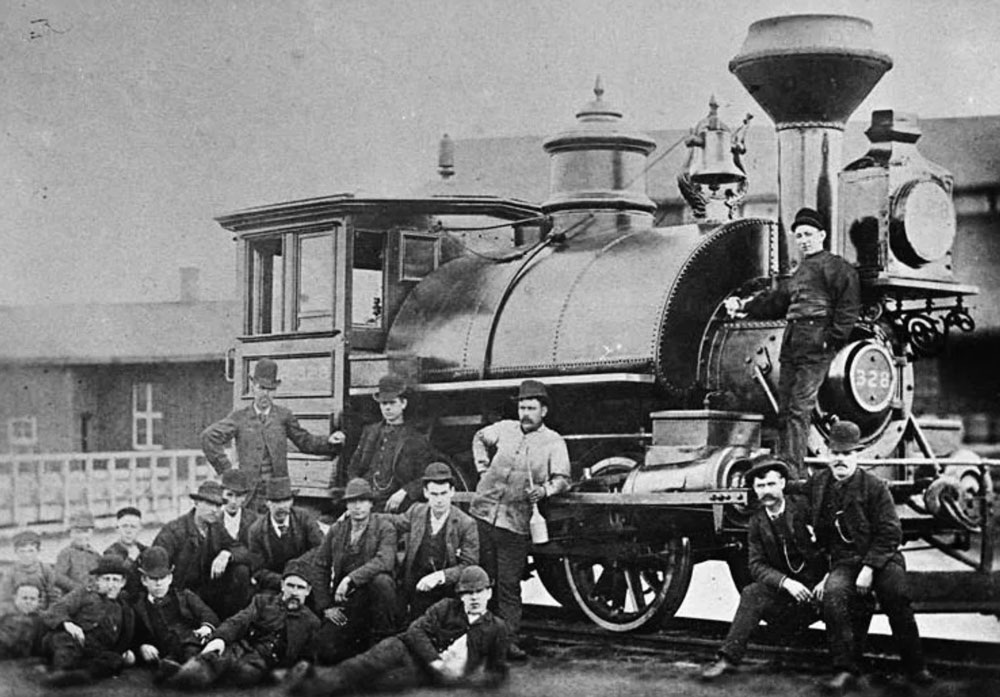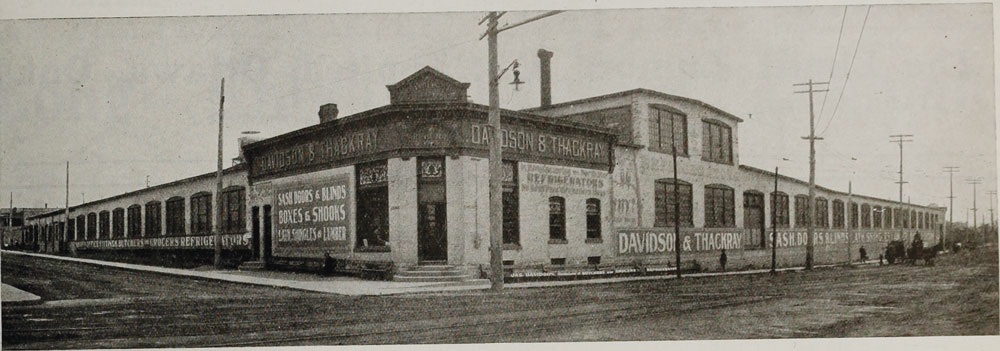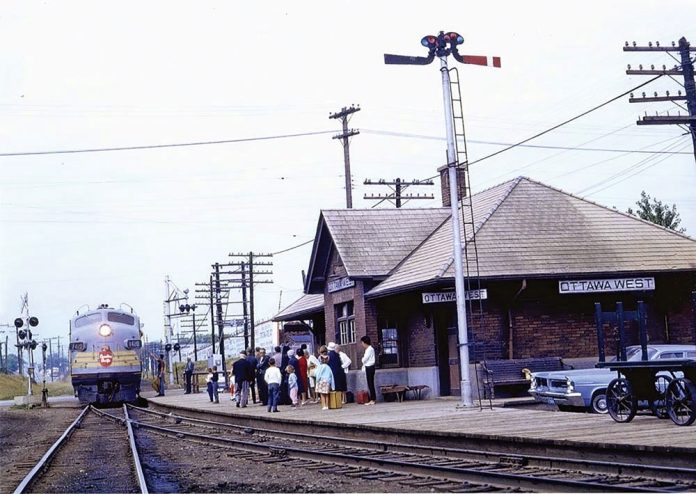The Northeast corner of Kitchissippi has always been an industrial center with railways, mills, lumber yards and manufacturing firms. It’s what came to this area first. The people and the houses followed.
Those days are nearly gone, with only a few physical remnants remaining. In February, Ottawa’s Built Heritage Committee voted unanimously to designate what was recently the Orange Art Gallery. Built in 1925, this building served as the offices for major eastern Ontario lumber firm W.C. Edwards.
Early growth and the development of west Centretown, Hintonburg and Mechanicsville can all be tied back to the arrival of the trains. You wouldn’t know it today, but the area all around Tom Brown Arena, City Centre, Bayview and east to Booth Street and north to the Ottawa River, was the site of sprawling, complex, massive early railway operations.

Riding the rails
The Canada Central Railway opened a line running west from Bayview to Carleton Place in 1870, while the St. Lawrence and Ottawa Railway opened a branch off their Prescott line to Bayview from about where Heron meets the Airport Parkway (now the Trillium rail corridor) a year later. The arrival of these lines meant building stations, platforms, roundhouses, offices, stockyard pens, storage buildings and coal chutes.
Lumber and manufacturing companies jockeyed for real estate near the tracks, anxious to have access to shipping lines via a short siding off the main. These same companies, and the railroads themselves, fought for land nearby to lay out subdivisions to enable their workers to live close to work. Hence a community like Mechanicsville was established in 1872.
Not long after, the Quebec, Montreal, Ottawa and Occidental Railway opened a line across the Ottawa River in 1880 via what is now the Chief William Commanda Bridge that came into Bayview. Three years later, the Canada Atlantic Railway extended their line from Elgin into Bayview, and finally J.R. Booth’s Ottawa, Arnprior and Parry Sound Railway opened a line from Bayview west to Arnprior in 1893.
Some of this infrastructure still lives buried underneath the fields and grounds, surprisingly well preserved as we found out in 2016 when an archaeology team working at the Trinity site next to City Centre uncovered the original turntable, engine house and roundhouse. Sadly, it will soon be removed as contaminated ground to make way for the condo development.
Related: When Holland and Byron was mostly railways

Long-time residents will recall that where Tom Brown Arena now stands was where the CPR roundhouse stood until it was demolished in April 1968. Across the street, where the Bayview LRT station now is was roughly where the original Ottawa West passenger station stood.
Proximity to the railways brought some major firms, none more significant in our area than J.R. Booth and his mills and lumber piling grounds. Nearly the entire tract of land north of the Somerset Bridge between the Trillium line to Preston Street was owned by Booth to maintain his massive piles of lumber. Where the City Centre tower now stands was Martin & Warnock’s Dominion Flour Mills, and a little to the south, where the Orange Monkey is was a large match factory.
All of these lumber facilities were wiped out in the great Ottawa-Hull fire of 1900, and again in 1903 when Rochesterville was decimated by a second blaze. Booth relocated to what is now the Carlington vet homes. This left behind a large open piece of land. The W.C. Edwards Company took over what is now the City Centre property.
Building industry
In Hintonburg, there were many early industries that were built around the railway. The Mason mill — later Shephard and Morse — was a large operation along the river that is now Bayview Yard and the approach to Lemieux Island. Not to mention Zagerman’s Lumber and Supply — now Merkley’s across the road from 1930 onwards.
The quiet residential development called Hintonburg Place just to the south of Tom Brown Arena is only a little over 20 years old, but was the long-time home of D. Kemp Edwards (nephew of W.C.) Lumber. On the opposite side of Hintonburg Place, adjacent to the Trillium line, is a small nondescript parking lot, but for many years this was the site of the Canadian Oil Company’s office building and massive holding tanks of gasoline, coal oil and naphtha oil.
One important remnant of the early industrial days we still have is the Somerset Street Bridge, which also has an important relationship with the early days of west end rail.

It’s hard to imagine today that the communities of Centretown and Hintonburg were once continuous, homogeneous land. The installation of numerous railroad tracks, and the later trenching of the tracks, created a massive man-made barrier between the two communities.
Once the tracks arrived in the 1870s, it essentially severed the neighbourhood from Dow’s Lake to Bayview. From that point on, bridges were required over the rail to access anywhere east. A level crossing in this area was out of the question, with the volume of trains coming and going creating a dangerous situation.
A wooden bridge was constructed over Cedar Street — as Somerset Street was known in the late 19th century — to span the railway tracks below. This was an important bridge for the community, made even more critical with the arrival of the electric streetcars in October of 1895. Hintonburg residents had been so insistent that the streetcars come to the village and use the Somerset Street bridge and Wellington Street that they separated from Nepean Township in 1893 primarily over this issue.
The great fire of 1900 destroyed the Somerset Street bridge, completely cutting off access to the east. The bridge was quickly rebuilt using iron this time, but there was also an impetus made for a second bridge, which after years of political wrangling opened in 1909 as the Wellington Viaduct. It stood until 1969 when the new Scott-Albert bridge at Bayview replaced it.
